Tessa’s Recipe Rundown
Taste: Tons of bright fresh lemon flavor! The perfect balance of sweet and tangy.
Texture: Ultra-buttery and moist with a thick, luscious glaze on top.
Ease: The batter comes together in minutes.
Why You’ll Love This Recipe: The most perfect spring or summer treat that any lemon lovers will go crazy over!
This post may contain affiliate links. Read our disclosure policy.
This Iced Lemon Pound Cake Loaf is even BETTER than the Starbucks Lemon Loaf.

Right behind chocolate, lemon is one of my favorite flavors. Every spring and summer, I crave sweet treats that are bright and sweet but still rich and satisfying.
When I started working on perfecting the lemon loaf, I envisioned an ultra-moist and buttery bite, bursting with lemon flavor.

Free Baking Science Mini-Course!
From cookies that spread to undercooked brownies, this FREE 5-day Baking Science course helps you conquer common baking challenges and make bakery-worthy treats every time.
Many lemon recipes seem to lose the intensity of the lemon flavor after baking, so I worked to find a way to pack a strong lemon punch without using difficult-to-source ingredients.
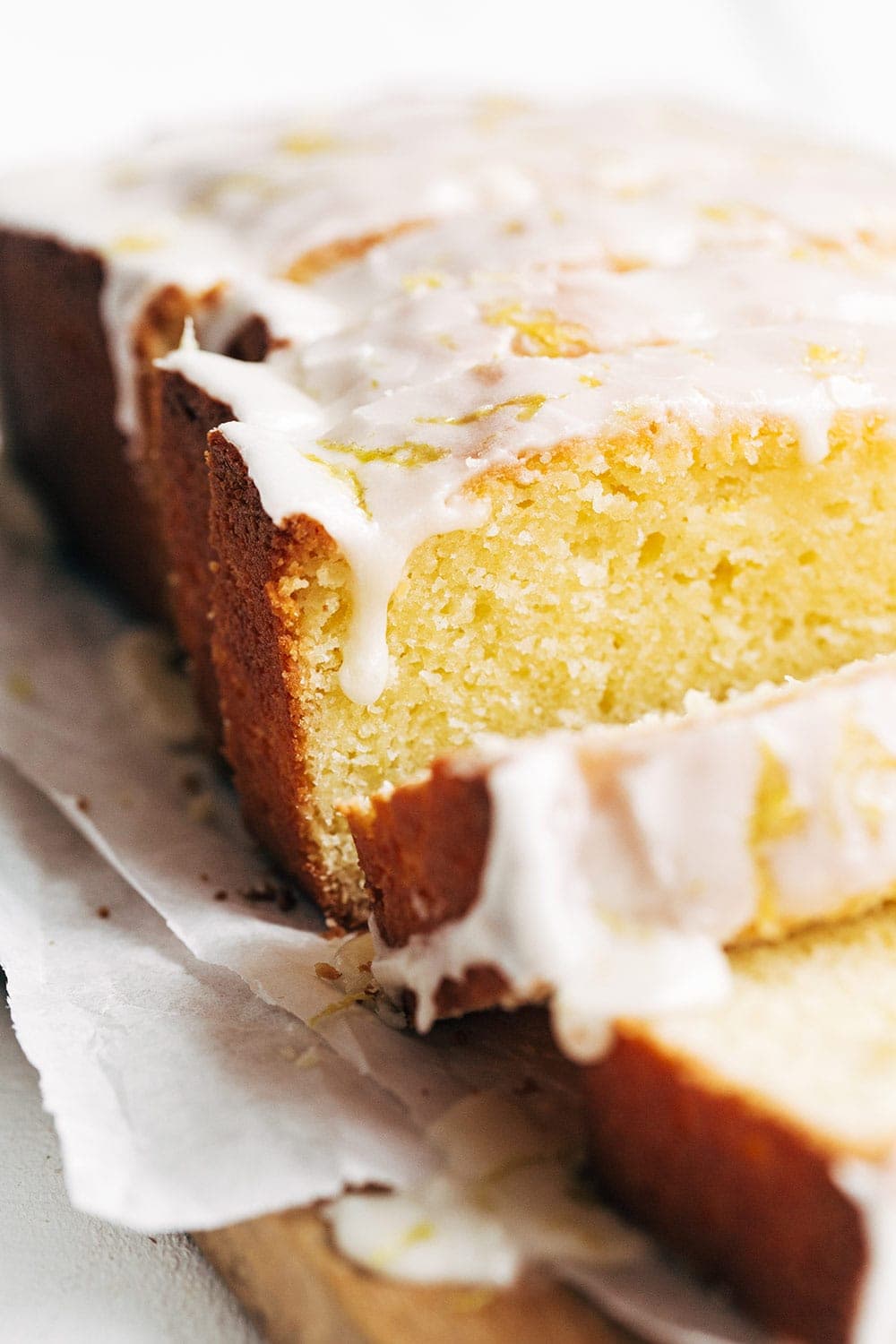
I tested batch after batch, tweaking and experimenting until I was obsessed with the final result!
Heavily inspired by Baked and Cook’s Illustrated recipes, this Starbucks Copycat Lemon Loaf recipe turned out better than I could have imagined.
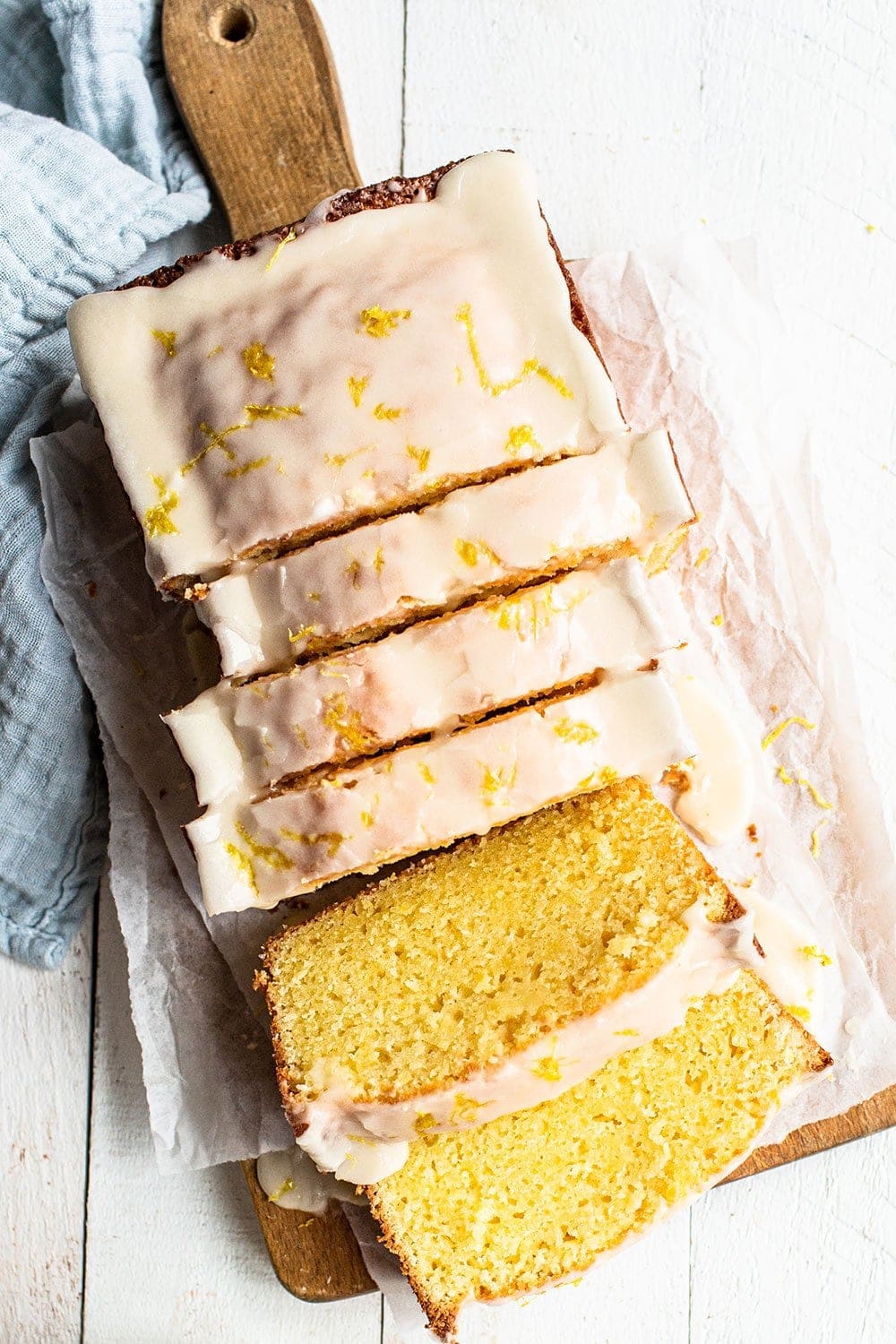

Sprinkle of Science
How to Make Lemon Pound Cake Loaf
What is Pound Cake?
Pound cake is traditionally made with a pound of each of the four main ingredients: flour, butter, eggs, and sugar. While this makes a traditional pound cake recipe easy to remember, it doesn’t always produce the best results. You’ll see my recipe below still uses a lot of butter and sugar, but the ratios vary slightly, for the best flavor and texture.
How to Make Moist Lemon Pound Cake
- Measure your ingredients correctly: I highly recommend using a digital kitchen scale to measure your ingredients, especially your flours. It’s SO easy to accidentally compact too much flour into your measuring cups, which will result in dry, lackluster pound cake. If you don’t have a scale, use the spoon-and-level method instead.
- Don’t reduce the sugar: It might seem simple to lower the sugar to cut sweetness, but this impacts more than you might expect. Lowering the sugar will impact the texture, structure, and more. Learn more about sugar’s role in baking here.
- Eggs and Sour Cream: These ingredients are crucial to this recipe, assisting in creating a rich, moist, and tender loaf. Feel free to use full-fat plain unsweetened yogurt instead of sour cream. I don’t recommend using an egg replacement unless you’re up for some experimenting.
- Butter: We’re using plenty of butter in this pound cake recipe, for a beautifully moist, buttery loaf with the best flavor AND texture. I always recommend using unsalted butter in baking. I have not tried any butter substitutes here.
Do I Have to Use Cake Flour?
This recipe uses half all-purpose flour and half cake flour for the best of both worlds. When using only all-purpose flour, the loaf had more of a muffin texture. When using only cake flour, the loaf was too delicate and crumbly.
While you can use only all-purpose flour, I highly recommend using real cake flour for the best texture here. Learn more about cake flour (and why I don’t use DIY substitutes) here.
Why Does This Loaf Recipe Require a Blender or Food Processor?
Like all pound cakes, this is a high-ratio cake, meaning there’s as much or more sugar than flour. This provides a beautifully moist tight-crumbed texture without needing to cream butter and sugar with an electric mixer.
Instead, a blender or food processor not only assists in making quick and easy work of making this batter, but it also helps emulsify all the rich ingredients together into a smooth batter.
The last ingredient is the melted butter, which must be drizzled in a steady stream as the blender or food processor runs to perfectly emulsify.
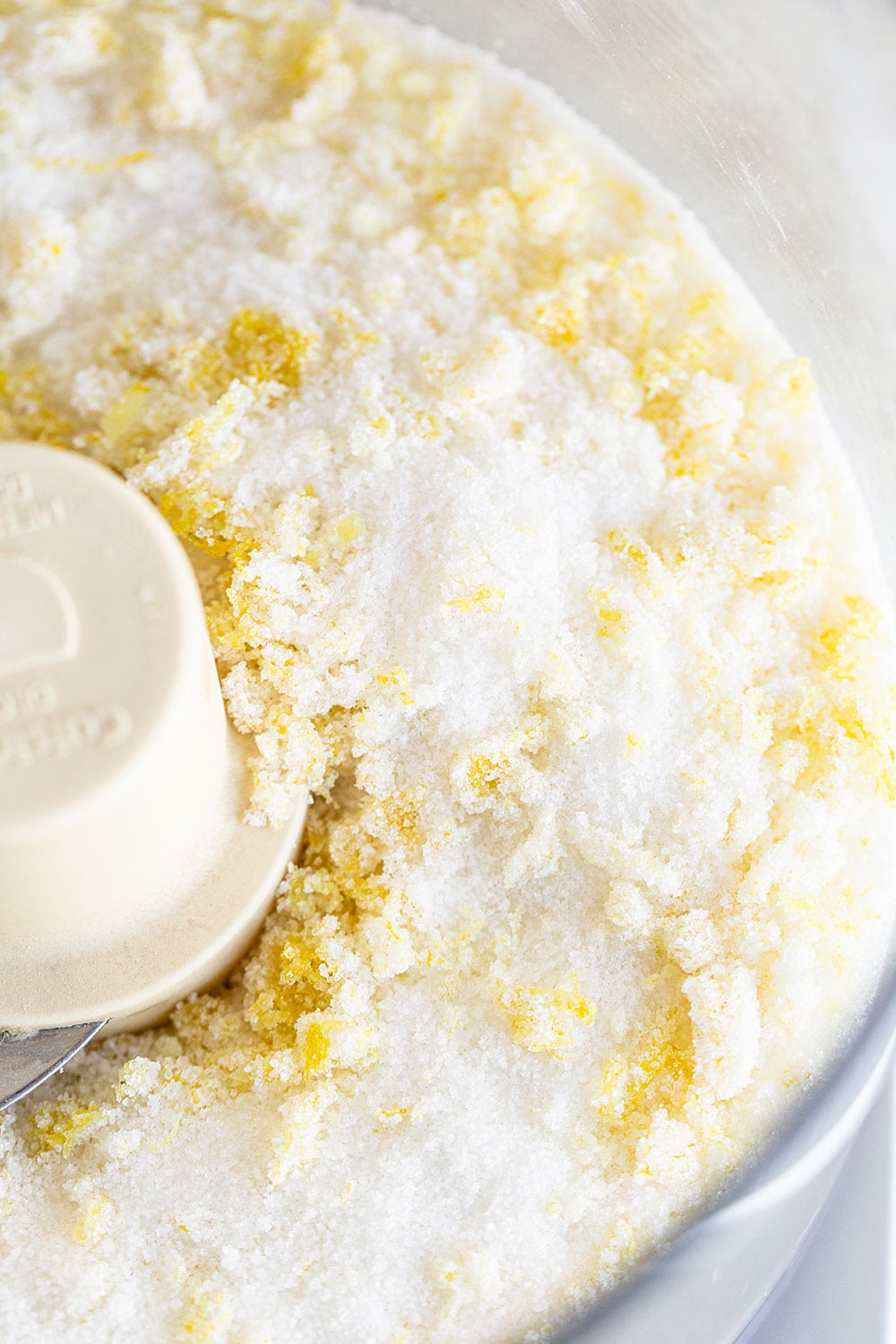
Can I Use a Different Sized Pan?
This recipe uses a 9 x 5-inch light-colored metal loaf pan for best results.
To Bake in a 8 1/2 x 4 1/2-inch Pan:
- Add about 5 minutes to the baking time. This is the pan I use for smaller loaves. Loaves baked in this slightly smaller pan will rise higher and look taller, more like what you’d see in a bakery case.
- If you use an even smaller pan, you may run the risk of the loaf overflowing, or collapsing slightly in the center, especially if you live at higher altitudes.
To Bake in a Bundt Cake Pan:
- Double all ingredients and bake in a well-greased 10 to 12 cup bundt pan and bake for about 50 to 60 minutes.
- OR, use my Lemon Bundt Cake recipe, which is lighter and more cakey than this pound cake recipe.
To Bake in Glass or a Ceramic Pan:
- I tested this recipe in a metal pan because it conducts heat quickly and efficiently.
- Glass and ceramic don’t conduct heat as effectively, so if you use this style pan, decrease the baking temperature to 325°F and increase your baking time by about 10 minutes.
- Check out my article on Glass vs. Metal Pans.
The Secret to Bright Lemon Flavor in Pound Cake (Even After Baking)
Lemon flavor can dull during the baking process. That’s why this recipe calls for two whole tablespoons (not teaspoons!) of both lemon zest and juice. Then there’s a tablespoon of fresh juice in the glaze, which helps give a fresh punch of lemon flavor. You’ll need about 3 large lemons in total.
The Lemon Glaze for Pound Cake
Be sure to wait until your Lemon Pound Cake is completely cooled before glazing, to avoid the glaze absorbing or melting.
Note: The consistency of your glaze will depend entirely on the brand of powdered sugar you’re using and how humid it is in your kitchen. Here’s how to tweak the glaze as needed:
- To Make the Lemon Glaze Thinner: Add more lemon juice or milk, 1 teaspoon at a time.
- To Make the Lemon Glaze Thicker: Add more powdered sugar, 1 teaspoon at a time.
How to Store Lemon Pound Cake
The cooled, glazed Lemon Pound Cake Loaf can be covered in foil or plastic wrap and stored at room temperature for up to 2 days.
Can I Freeze This Lemon Loaf?
Yes! Wrap the unglazed loaf tightly in plastic wrap and store for 1 month. Thaw overnight in the fridge and then bring to room temperature before glazing. Your loaf will likely develop a moist or tacky surface on top, but the glaze should disguise it nicely.
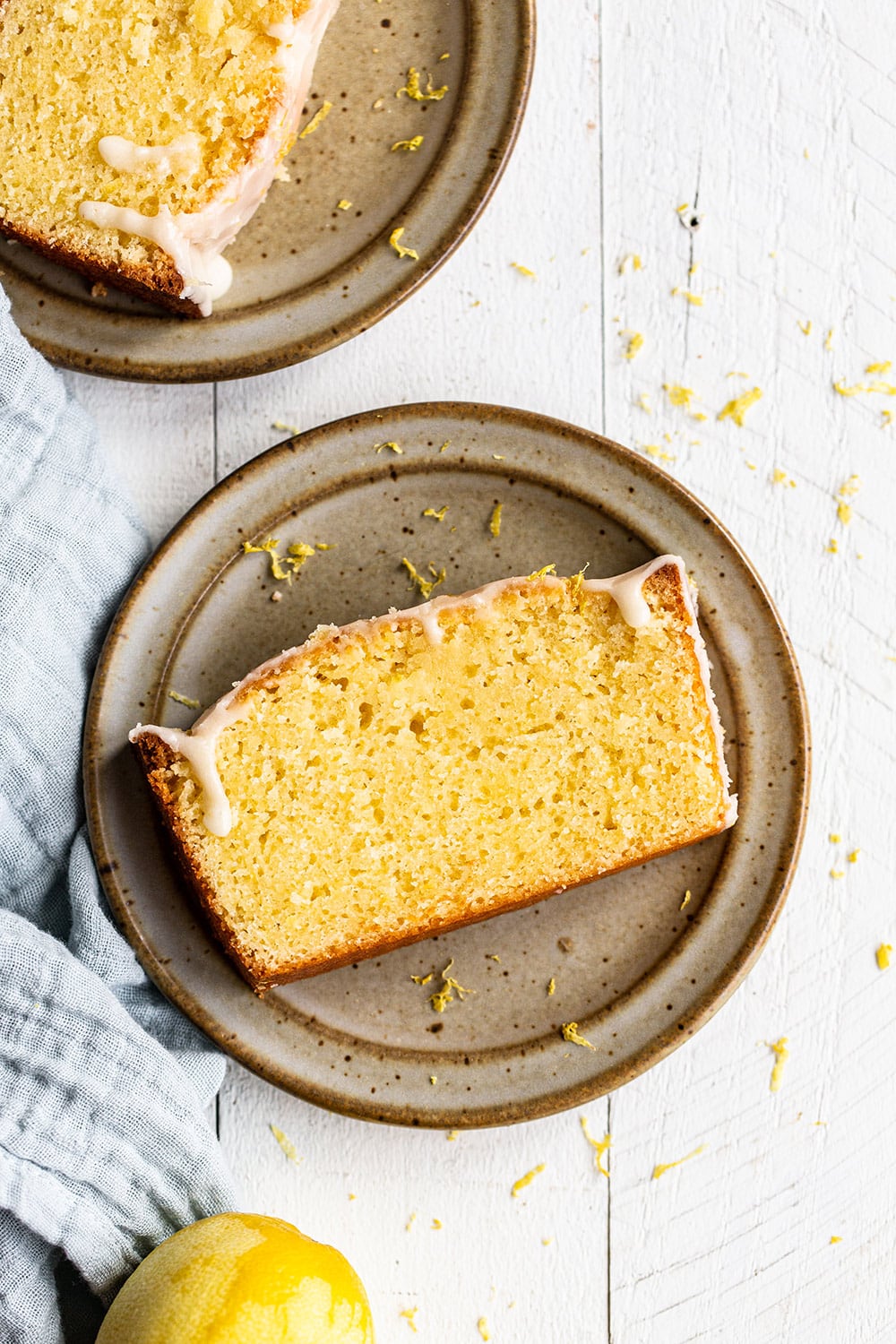
More Lemon Recipes You’ll Love:
- Glazed Lemon Cookies – my favorite lemon cookies!
- Lemon Poppy Seed Muffins
- Lemon Cheesecake
- Raspberry Lemonade Cheesecake Bars
- Lemon Yogurt Zucchini Bread

Lemon Pound Cake Loaf
Email This Recipe
Enter your email, and we’ll send it to your inbox.
Ingredients
For the cake:
- 3/4 cup (95 grams) all-purpose flour
- 3/4 cup (85 grams) cake flour
- 1 teaspoon baking powder
- 1/2 teaspoon fine salt
- 1 1/4 cups (250 grams) granulated sugar
- 2 tablespoons fresh lemon zest (from about 3 lemons)
- 2 tablespoons fresh lemon juice (from about 1 lemon)
- 4 large eggs, at room temperature
- 1/4 cup (57 grams) sour cream or plain yogurt, at room temperature
- 2 sticks (227 grams) unsalted butter, melted and cooled
For the glaze:
- 1 cup (125 grams) powdered sugar
- 1 tablespoon fresh lemon juice
- 1 tablespoon milk or cream
Instructions
Make the loaf:
- Preheat the oven to 350°F. Grease a 9 by 5-inch metal loaf pan.*
- In a large mixing bowl, sift together the cake flour, all-purpose flour, baking powder, and salt. Set aside.
- In the bowl of a food processor or high-speed blender, combine the sugar and lemon zest. Pulse a few times to evenly distribute the zest. Add the lemon juice, eggs, and sour cream and pulse until combined. On low speed, gradually drizzle in the melted butter in a slow steady stream until well combined.
- Make a well in the dry ingredient mixture. Pour in the wet ingredients. Mix gently with a rubber spatula until just combined. Batter will be slightly thin.
- Pour mixture into prepared pan and spread evenly. Bake until a toothpick inserted into the center comes out clean or with just a few moist crumbs attached, about 50 minutes if using a metal pan, or once an internal temperature of 200-205°F is reached.
- Cool in pan for 15 to 20 minutes then run a thin flexible knife around the edges before inverting onto a wire rack to cool completely.
Make the glaze:
- In a small bowl, whisk together the glaze ingredients until thick but pourable. Add more juice or milk to thin out or more sugar to thicken to your desired consistency. Spoon over the cooled loaf, letting it drip down the sides if desired. Let set for 15 minutes before slicing and serving.
Recipe Notes

The Ultimate Cookie Handbook
Learn the sweet SCIENCE of cookie baking in a fun, visual way to customize your own recipes frustration-free. Plus, my best 50+ homemade cookies!
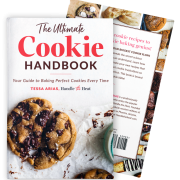
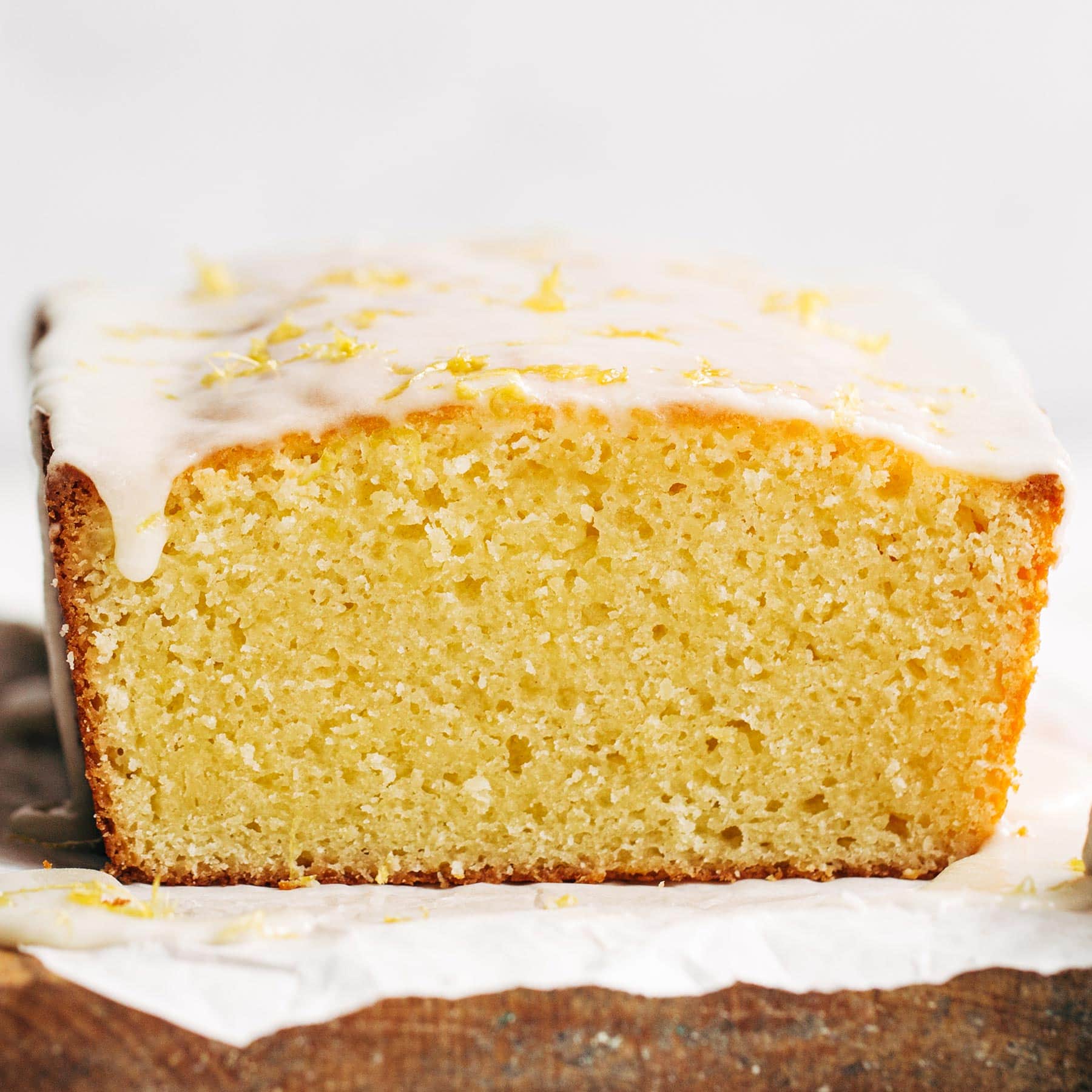

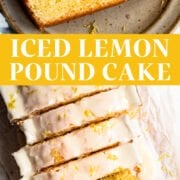
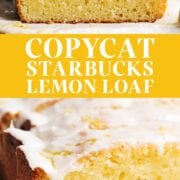

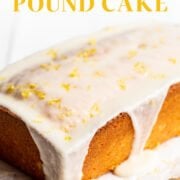
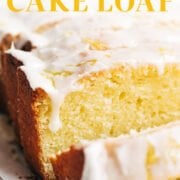
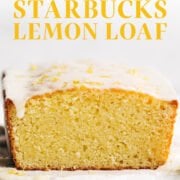
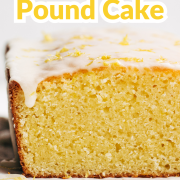



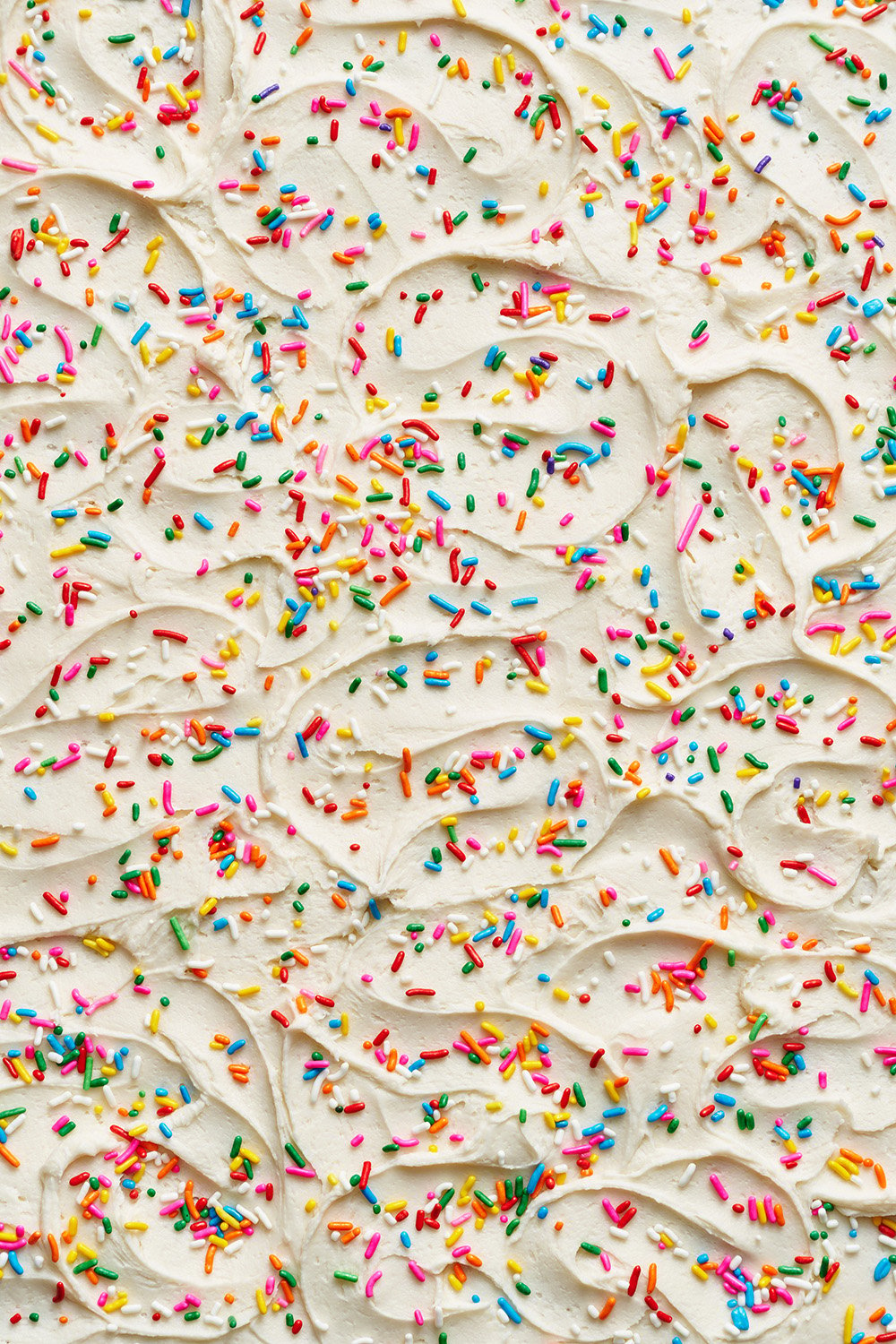



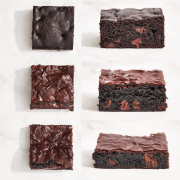
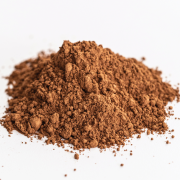
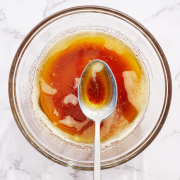

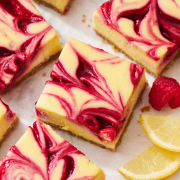
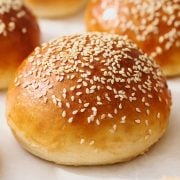
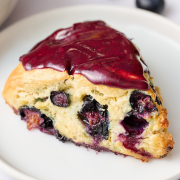








Wow! Best lemon pound cake I’ve ever made! While I made this mostly as directed, I subbed plain Greek yogurt for sour cream, and added a tsp of limoncello (cause I saw it in the freezer😊). We did not make the glaze. The texture and the flavor of this cake was exactly perfect!
Can a mixer be used instead of a food processor?
We haven’t tested this with a mixer, but for best results, we recommend using a food processor or high-speed blender if you have one. Learn more about why this loaf requires one here. If a mixer is your only option, it might work with the whisk attachment, but you’d likely need to whip for a longer period of time. If you try it, we’d love to hear how it goes!
Yum
Please forgive my ignorance. I’m an old, old man but a brand new baker – and you’re my teacher! In the directions, you indicate that the melted butter should be drizzled in on a low speed. I can’t seem to find anything other than full speed ahead on this Cuisinart contraption. Will I ruin the loaf and waste all those ingredients by over-mixing or something? Thanks for the help!
Hi John! Welcome to the fun world of baking!! The low speed in that step is mostly to ensure the butter is properly emulsified with the other ingredients, and to prevent two things: overmixing, and splattering the melted butter everywhere! Take caution, ensuring that you’re using a deep bowl so you don’t splatter the ingredients all over your countertops/yourself haha, and also mix only juuuust until the ingredients look well-combined, and then stop mixing, to prevent over-mixing at this stage. I hope that helps! Let us know how it goes 🙂
I made this and it was delicious. I did make two changes that I’m going to mention here just so others know you can do it. I shaved off 1/4 of the butter and I substituted 1 the eggs for a flaxegg made with lemon juice and flax seed. I’ll definitely be using this recipe again.
wow!
I made this and the cake itself was perfect. But i think i did something wrong with the glaze because mine turned out runny and translucent instead of white and thick like yours (even though i already added 1 tbsp more powdered sugar). Like you said the consistency will depends on the brand of powdered sugar so i think next time i’ll try another brand of sugar that is specialized for icing instead of this cheap powdered sugar i used lol
TLDR: This is the best recipe I’ve made to date. You will not be disappointed. This lemon loaf should be added to every (serious) baker’s repertoire. I cannot stress this enough.
I went the extra mile and ended up getting lemon extract to put in the loaf itself AND the glaze . Speaking of the glaze, I omitted the cream in the glaze just because I prefer a thicker glaze. You will not be disappointed if you do that. Regarding the extract, just make sure you don’t add too much haha, but if you do add too much, know that you will have the best flavored lemon loaf out there (I added too much because that’s my business, ha! It still was PERFECT, and booming with flavor) #SweetToothersUnite
When blending all the ingredients and putting the wet ingredients into the dry, I spiraled a bit because the batter was so liquidy. I was like “oh my gosh, what did I do this time ?” I bring this up because please know that if the batter seems more liquidy than usual, it’s totally ok. There’s literally an amazing lemon loaf waiting for you in 55 minutes (assuming you made everything right, lol)
To express gratitude to the Handle The Heat team, thank you so much for another kick recipe. You have been bringing so much joy in my life and I’m so excited to try more recipes from you. I’ve made too many recipes to count and you all are the first website I go to, because I trust you. Bravi!
I’m so glad you enjoyed the recipe, thanks for sharing your experience!
I made it several times and each time is a success ! Thank you very much for all your recipes ! And what’s more is you indicate the measurements in grams which is great for us French people
Writing this while my loaf is in the oven ! However today the batter was different, more like an emulsion and thicker than usual … no idea why but hopefully it will turn as good as it usually is ! Thanks again !
Hi Aurore! So glad to hear that you enjoy Tessa’s recipes! Without having baked alongside you, it’s difficult to say what could have gone wrong this time. Did you try any new ingredients or change brands of flour, butter, yogurt, etc? Was anything possibly mismeasured by accident? Also, check that your baking powder is still fresh, as expired baking powder could have changed the texture of your batter – learn more about that here. I hope your loaf still turned out as delicious as always!
This was good! Made it for coffee after church this morning and there was nothing left. All I got was an end piece and someone else took the other end! I made some mistakes so it was a bit drier than I think it probably might otherwise have been. I baked it in a glass pan but didn’t see the recipe suggests baking at 325 for glass pan so I baked it 30 minutes at 350 before questioning why it was browning so fast. I turned the heat down but it still got pretty brown around the edges. I trimmed it – still good! I also added a bit of lemon oil for added lemon punch. I made the glaze but added a tablespoon of melted butter to get a thicker, more stable icing, and I added a few drops of lemon oil to the glaze. It was nice and thick – almost too thick so I’m not sure I’d add the butter next time. My only bummer about this – likely my fault because I baked it too hard – was that I was hoping it would have a lighter crumb. I’m on a quest for a lighter crumb. But that is personal taste and I would absolutely bake this again! At 325… 😉
I can’t wait to make this amazing looking cake but first I have a question. I have the 1.25 USA loaf pan. Would that work for this recipe and if so, how should I amend the cooking time? I’m going out tomorrow for the cake flour!!
Thanks so much!!
Eileen
Hi Eileen! This recipe was written for the USA 1.25 Lb Loaf Pan, but alternate pan directions can be found above the recipe (in the pink tip box). Let us know what you think of this recipe once you’ve given it a try! 🙂
Have you ever made this without lemon? For a good ‘ole fashioned plain buttery pound cake?
Hi Laura! We haven’t tried that, as this recipe was formulated to be a deliciously lemon-y loaf, much like the Starbucks Lemon Loaf. Let us know if you give this a try 🙂